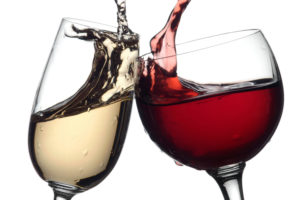“On the day that you wave the sheaf, you are to offer a male lamb without defect, in its first year, as a burnt offering for Adonai. Its grain offering is to be one gallon of fine flour mixed with olive oil, an offering made by fire to Adonai as a fragrant aroma; its drink offering is to be of wine, one quart.”-Leviticus 23:12-13
We are in the midst of studying Firstfruits and its accompanying offering rituals.
What would first happen is the worshipper would present his firstfruits grain to the priest who would then in turn present it to God by means of TENUFAH.
Do you recall what TENUFAH means?
That’s right, it means a “wave offering“.
The priest would hold the OMER (sheaf of grain) at shoulder level and then literally wave it up and down and right to left.
By doing TENUFAH, the priest was asking the Lord for His acceptance.
On the same day, an OLAH or Burnt Offering was also offered up.
The chosen animal for the Burnt Offering was to be a young ram (male lamb).
Now do you recall which offering was pretty much always paired together with the OLAH or Burnt Offering?
It was the MINCHAH or Grain Offering.
Recall that the MINCHAH could be either moist raw dough, cooked cake-like dough, or a grilled flatbread.
Finally, we’re also told that a libation offering was to be included with the firstfruits.
A Libation Offering is referring to a “drink offering“.
Depending on the occasion, the Libation Offering could be water but here it is referring to wine.
When the Bible talks about wine, it is specifically referring to WINE.
It means fermented grapes and NOT grape juice.
In fact, I imagine for the most part grape juice wasn’t drunk much in those days unless it was drunk immediately after the grapes were pressed or they spoiled.
The fermentation process of turning grapes into wine served two purposes.
The first purpose was to make a healthy drink that could be stored for a long time without going bad.
The second purpose was to create an alcoholic drink which provided good cheer and relaxation at special joyous celebrations.
The typical Hebrew word for wine used in the Scriptures is YAYIN.
YAYIN refers to a drink that has undergone fermentation for a modest amount of time.
Its alcoholic content was relatively mild, similar to our modern table wine.
On the other hand, some of the wine was allowed to ferment for a really good long time which resulted in hard liquor.
And that was the goal of this long fermentation period, to create a drink that was highly potent!
The Hebrew for this type of strong alcoholic drink was called SHEKAR.
Here’s the thing, YAYIN or regular wine is pretty much always spoken of in a positive way in the Scriptures.
It is SHEKAR, the strong stuff, that has negative connotations attached to it.
It wasn’t the high alcoholic content of SHEKAR that was the problem.
It was just the fact that it was often used just to get drunk as quickly as possible.
This was in contrast to YAYIN which was used for HOLY consecrations or even medicinal purposes.




Interesting insight into the book of Leviticus. Lot of good things to see in that book.
Thanks for the positive thumbs up Terry! Be blessed! Shalom.
I must say it was hard to find your site in google.
You write interesting posts but you should rank your page higher in search engines.
If you don’t know how to do it search on youtube: how to rank
a website Marcel’s way
Hi there. I’m a bit surprised at your comment. All you have to do is just google “messianic revolution”! We’re the NUMBER ONE SITE under that search term.